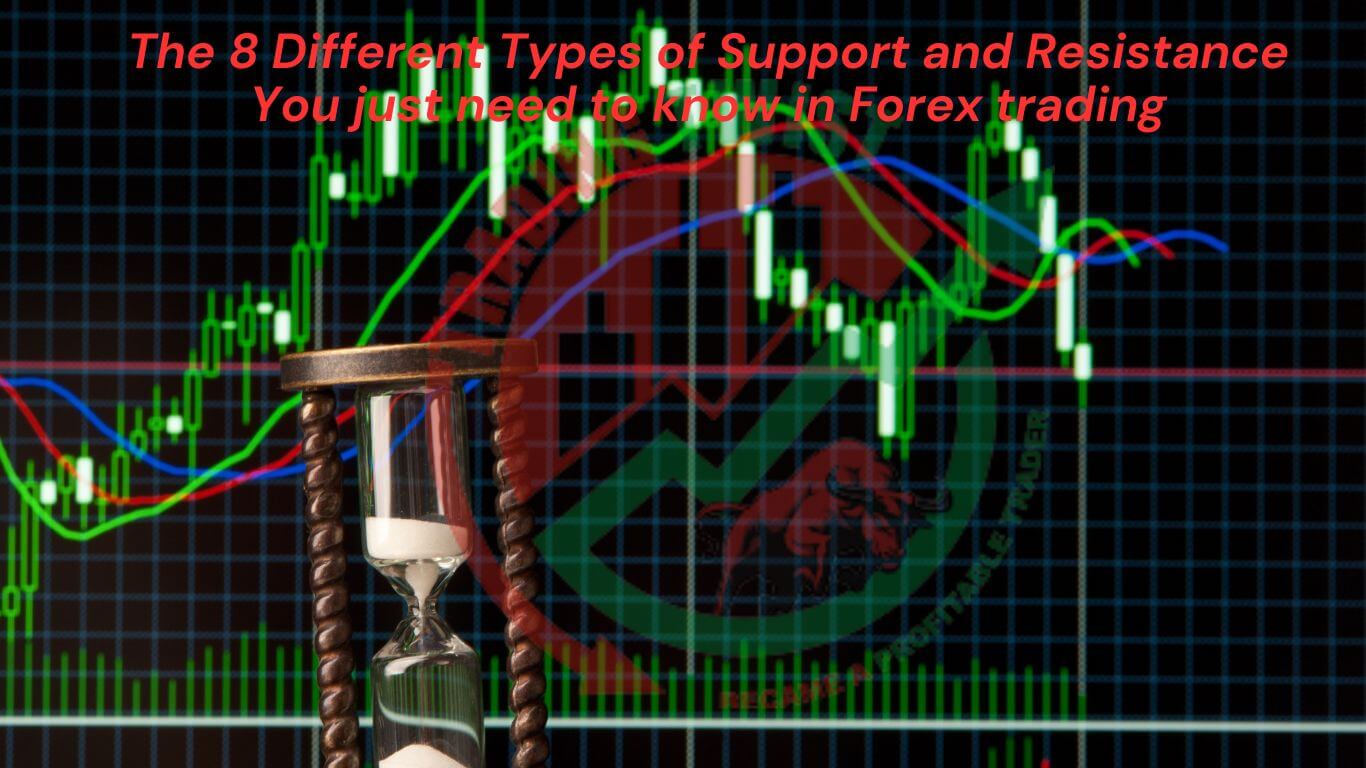
Support and resistance levels are essential concepts in forex trading as they help traders identify potential buying and selling opportunities. In forex trading, support and resistance refer to price levels where the market tends to stall or reverse. Traders used these types of support and resistance levels to identify potential entry and exit points for their trades.
Understanding the different types of support and resistance levels can help traders make more informed trading decisions and improve their chances of success in the market.
Horizontal Support and Resistance Levels
Horizontal support and resistance levels are price levels where the market has previously stalled or reversed. These levels are created when the market repeatedly tests a price level and fails to break through it. Once a price level has been established as support or resistance, it tends to hold in the future.
Horizontal support and resistance levels can be used to identify potential entry and exit points for trades. Traders can look to buy at support levels and sell at resistance levels.
Dynamic Support and Resistance Levels
Dynamic support and resistance levels are price levels that are constantly changing based on the market’s movements. These levels are created by technical indicators such as moving averages and trendlines.
Traders can use dynamic support and resistance levels to identify potential entry and exit points for trades. For example, if a moving average is acting as support, a trader might look to buy when the price touches the moving average.
Psychological Support and Resistance Levels
Psychological support and resistance levels are price levels that are influenced by human psychology. These levels are typically round numbers such as $1.00 or $10.00 and tend to act as support or resistance.
Traders can use psychological support and resistance levels to identify potential entry and exit points for trades. For example, if the price is approaching a psychological resistance level, a trader might look to sell.
Trendlines as Support and Resistance
Trendlines are lines drawn on a price chart that connect two or more price points. These lines can act as support or resistance levels.
Traders can use trendlines to identify potential entry and exit points for trades. For example, if a trendline is acting as support, a trader might look to buy when the price touches the trendline.
Moving Averages as Support and Resistance
Moving averages are technical indicators that calculate the average price over a specified period. These averages can act as support or resistance levels.
Traders can use moving averages to identify potential entry and exit points for trades. For example, if a moving average is acting as support, a trader might look to buy when the price touches the moving average.
Fibonacci Levels as Support and Resistance
Fibonacci levels are price levels that are based on the Fibonacci sequence. These levels can act as support or resistance levels.
Traders can use Fibonacci levels to identify potential entry and exit points for trades. For example, if a Fibonacci retracement level is acting as support, a trader might look to buy when the price touches the level.
Pivot Points as Support and Resistance
Pivot points are technical indicators that calculate the average of the high, low, and closing prices from the previous day. These levels can act as support or resistance levels.
Traders can use pivot points to identify potential entry and exit points for trades. For example, if a pivot point is acting as support, a trader might look to buy when the price touches the level.
Identifying Support and Resistance Levels in Forex Trading
To identify support and resistance levels in forex trading, traders can use technical analysis tools such as price charts, trendlines, moving averages, Fibonacci levels, and pivot points. Traders can also use fundamental analysis to identify support and resistance levels based on economic news and events.
Using Support and Resistance Levels in Your Trading Strategy
Support and resistance levels are crucial components of any successful forex trading strategy. Once you have identified these levels, you can use them to help you make informed trading decisions. One common strategy is to look for a price breakout above a resistance level or below a support level.
If the price breaks out above a resistance level, it could be a signal to buy, and if it breaks below a support level, it could be a signal to sell. Traders can also use support and resistance levels to set stop-loss and take-profit levels, which can help to minimize risk and maximize potential profits.
Another strategy that traders use is to look for price bounces off of support and resistance levels. If the price approaches a support level and bounces off of it, it could be a signal to buy, and if it approaches a resistance level and bounces off of it, it could be a signal to sell.
This strategy is often used in conjunction with other technical indicators and fundamental analysis to help traders make informed trading decisions.
So, Understanding the different types of support and resistance levels can help traders make more informed trading decisions and improve their chances of success in the market.
The Importance of Risk Management when Trading with Support and Resistance
As with any trading strategy, it is important to have a risk management plan in place when using support and resistance levels. While these levels can be useful in identifying potential entry and exit points, they are not foolproof, and there is always a risk of the market moving against your position.
To manage this risk, traders should consider using stop-loss orders to limit their losses if the market moves in the opposite direction of their trade. They should also avoid risking too much of their trading capital on any single trade, and should instead aim to diversify their portfolio and spread their risk across multiple trades.
Conclusion:
Using Support and Resistance Levels to Improve Your Forex Trading Strategy.
Support and resistance levels are essential tools for any forex trader looking to make informed trading decisions. By identifying these levels, traders can better understand market conditions and identify potential entry and exit points for their trades. Whether you are a novice or experienced trader, understanding the different types of support and resistance levels and how to use them in your trading strategy can help you to improve your performance in the forex market. However, it is important to remember that no trading strategy is foolproof and that success in forex trading requires discipline, patience, and a willingness to continuously learn and adapt to changing market conditions.








